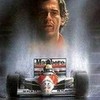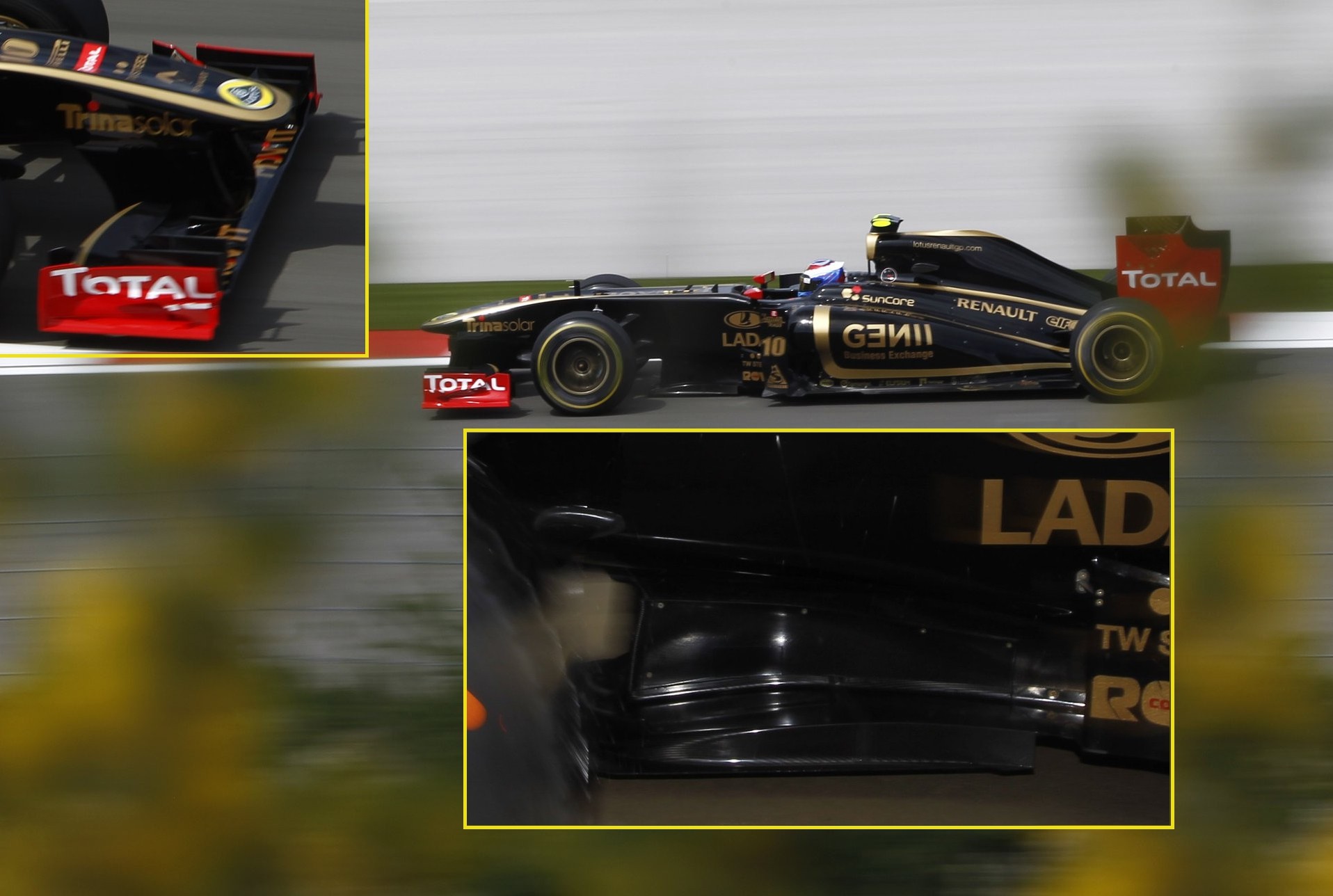



And shots of old and new RW:

new RW

old RW






Isn't it kicking up spray rather than evaporation?beelsebob wrote:In P1 we just got a really nice shot of the renault exhaust in the wet – it would appear that it does cause some evaporation on the track
mith wrote:Thanks for the pictures. I had to go to my university at the morning and was able to see only the last half of an hour of the practice.
Not a technical issue, but when the endplate is so broken up and complicated, what is the point of having a sponsor logo there? I don't think I've seen an angle yet where 'Total' is readable on those endplatesmadly wrote:
It is four-stroke engine, so every cylinder is firing one time per two revs.richard_leeds wrote: I'm curious about seeing bursts for individual cylinders. Say 3,0000 rpm for a slow corner gives 50 revs per second. Given 4 cylinders per exhaust, that gives 200 cylinder firings per second.
That still wouldn't explain that we see about 4 pulses per second – I'm going on the very low frequency of them revving the engine to blow the floor to explain the pulses you see coming out of the exhaust.tikavi wrote:It is four-stroke engine, so every cylinder is firing one time per two revs.richard_leeds wrote: I'm curious about seeing bursts for individual cylinders. Say 3,0000 rpm for a slow corner gives 50 revs per second. Given 4 cylinders per exhaust, that gives 200 cylinder firings per second.
We aren't seeing every firing because of the exhaust construction, each pulses are overlaping, so we're seeing less, but stronger pulses.
I haven't seen the practice in TV but maybe it was due to the stroboscopic effect which can happen if short shutter times were used in the TV camera.beelsebob wrote:That still wouldn't explain that we see about 4 pulses per second
Absolutely definately wasn't – you could see a series of puffs of vapour/spray behind the car – one for each time the exhaust vented, them staying in phase with the camera, rather than just forming a general mist would be pretty damn unlikely.piast9 wrote:I haven't seen the practice in TV but maybe it was due to the stroboscopic effect which can happen if short shutter times were used in the TV camera.beelsebob wrote:That still wouldn't explain that we see about 4 pulses per second

Mikey_s wrote:Whatever you're seeing is not cylinder pulses... if the engine is revving at e.g. 18000 rpm, then there are 9000 ignitions per minute = 150 ignitions per second = each cylinder firing 18.75 times per second...

Durring overrun phase fuel ignites inside exhaust/manifold by contacting hot surfaces - but they are not that hot, so the process is not 100% reliable IMO. From time to time some unburnt fuel accumulates in the pipes and when finally gets ignited we see those puffs of smoke (sometimes even flames). No correlation to actual RPM.HampusA wrote:The overrun on the engine was very nice to see on TV for sure, you could see the pulses of the exhaust pretty well thanks to the rain but it seemed to be very raw and "aggresive" and not really linear and fine tuned even though it probably is.